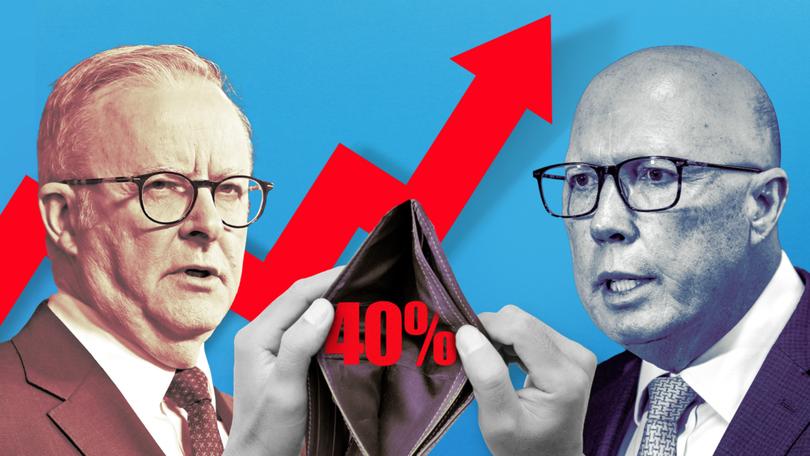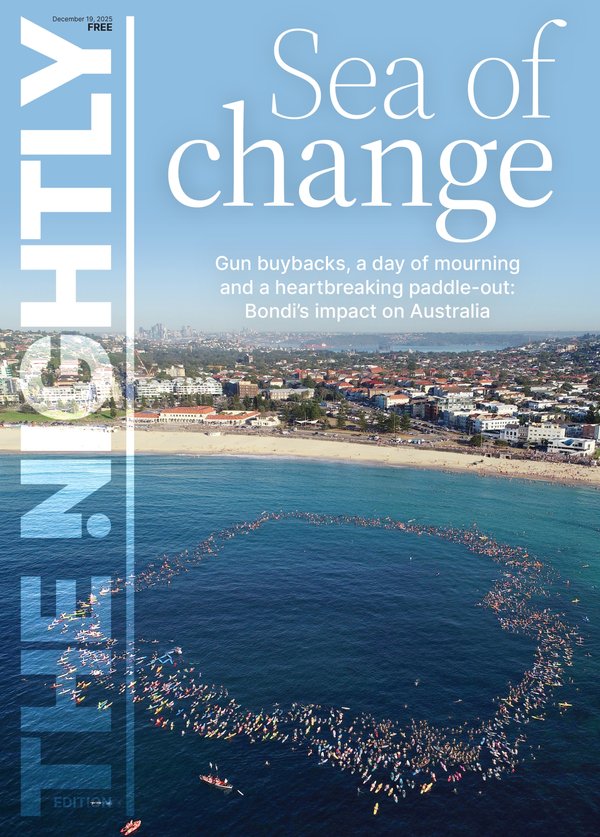Key issues in an election fight over the cost-of-living

The scene has been set for a tight Federal election race dominated by the cost-of-living crisis, with both sides claiming to ease hip-pocket pressures for households while fixing the economy.
For months Labor has been drumming its mantra of reducing inflation from starting with six percentage points down to a two, creating 1.1 million jobs and delivering real wage growth, into the public consciousness.
It goes to the polls offering a “modest” tax cut from 2026, an $8.5 billion boost to Medicare, cheaper medicines, and student debt relief.
Sign up to The Nightly's newsletters.
Get the first look at the digital newspaper, curated daily stories and breaking headlines delivered to your inbox.
By continuing you agree to our Terms and Privacy Policy.The Coalition argues the best way to escape the cost-of-living crisis is to rein in inflationary spending, pushing better productivity and smaller government as the key to strong economic management.
It plans to counter Labor’s message with its own pitch to lower energy bill prices by increasing gas supplies and introducing nuclear power, halve fuel excise for a year, slash the public service and offer a tax break to subsidise small business hospitality.
Whoever can convince voters of the best deal will be on the way to victory.
Housing crisis
Australia’s housing crisis will be a hot button issue as major parties vie for votes in the crucial mortgage belts of NSW and Victoria, and the Greens push for greater rights for renters.
No one party can claim to have the panacea for such a complex problem.
Labor set itself the ambitious target of building 1.2 million homes by mid-2029 but is on track to fall 300,000 short.
In February, the Government matched an Opposition policy to ban foreign investors from purchasing existing homes for at least two years — a strategy experts say will make little difference to housing affordability.
The Coalition says it will unlock up to 500,000 new homes by investing $5b to fund essential infrastructure like water, power and sewage.
It has pledged to reduce permanent migration from 185,000 to 140,000 for two years before moving it back up to 160,000.
The Grattan Institute’s housing policy guru Brendan Coates says while cutting immigration could make housing a bit cheaper, it would make the economy poorer in the long run. “It’s a trade off,” he says.
Greens housing spokesman Max Chandler-Mather pointed to a phase-out of negative gearing and the capital gains tax discount for people with multiple investment properties as a major priority to help first home buyers.
The savings could be used to set up a government-owned property developer to build hundreds of thousands of good quality, affordable homes, he said. Long term, the party will push for a national limit on rent hikes.
Health
A major Government announcement in February on Medicare bulkbilling, flagged as a “legacy-defining” centrepiece election pledge aims to ensure nine in 10 visits to the doctor will be free by 2030. It has also pledged a $25 cap on PBS medicines.
The landmark $8.5 billion boost to Medicare intends to halt the decline of bulk-billing, but is also part of a “Mediscare” campaign to exploit perceived Opposition vulnerabilities on its healthcare record.
The Coalition immediately countered the move with its own promise of a $9b investment in Medicare, including a previously announced $500m fund to address mental health concerns.
Both sides have faced questions about how they will fund their ambitious policies.
The medical community has given a cautious welcome to the bulkbilling move but stressed the need for more fundamental reform, especially to close the gulf between better-resourced urban medical clinics and rural practices with higher service costs.
Greater support is needed for patients with more complex needs from an increase in chronic disease, say doctors.
The Greens, meanwhile, have doubled down on demands to include dental procedures under Medicare, arguing millions are avoiding dentists they simply cannot afford.
Energy
Whoever wins the next election will lead the country to a crossroads on energy policy.
The major parties have pledged to stick by the Paris climate pact goal to reach net zero greenhouse gas emissions by 2050 to combat climate change, but they are offering radically different strategies to do so.
Voters must decide between Labor’s pursuit of 82 per cent renewables by 2030 or the Coalition’s dramatic shift to introduce seven nuclear power stations to the power grid by 2035.
Labor will be keen to tout its initial $300 energy bill rebate and additional energy bill relief to small businesses as a key part of its record on cost-of-living help, and a recently announced $1.8b extension in energy bill relief, which grants a further $150 rebate to every household
But it has failed to meet a 2022 election promise to deliver households annual $275 savings on electricity.
The Coalition has said it will lower near term energy bill policies through ramping-up domestic gas production.
It has faced scepticism of its claim that expensive nuclear power plants will eventually lead to a 44 per cent reduction being passed through in energy bill relief.
In the fog of figures swirling round Australia’s energy future, industry leaders have urged the nation’s politicians to centre post-election decisions on science and economics, not heated partisan debate.
Meanwhile, the next Government will need to quickly focus on setting its emissions reduction target for 2035 after Australia — along with many other Paris signatories — missed the UN’s February 10 deadline for doing so.
National Security
US President Donald Trump’s upending of US alliances, an increasingly belligerent Beijing, and the rapidly evolving crises in Ukraine and the Middle East have caused the unexpected emergence of defence and national security as an election issue.
After Australia was circumnavigated by a fleet of Chinese warships, the Coalition promised to boost national defence by reinstating the acquisition of a fourth F-35A Lightning II squadron.
Labor has talked up its commitment to the $368b AUKUS program — to deliver a nuclear-powered submarine capability for Australia with the help of the US and the UK — as the cornerstone of its defence blueprint.
Australian defence spending was $53.3 billion in 2023–24, or two per cent of GDP. By Treasury projections it will reach 2.4 per cent of GDP in 2027–28.
Canberra is now facing pressure from the US, its biggest ally to boost defence investment to three per cent — a hard sell for any party in a cost-of-living crisis, but experts say geopolitical realities demand more deterrence.
For people unsettled by an unpredictable world, it may come down to a “perception of competence” about which leader can handle it best, said Peter Jennings, director of Strategic Analysis Australia.
“So I think that that sense of uncertainty is going to be potentially a key factor in the election outcome, particularly for undecided voters.”

